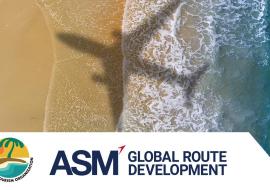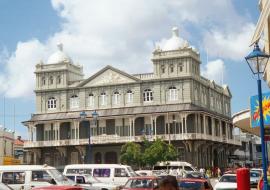Caribbean Tourism Soars: Strategies for Sustained Growth in a Competitive Landscape

The Caribbean has experienced a remarkable resurgence in tourism in the first half of 2024, with international arrivals increasing by 10% year-on-year and overall growth reaching 13% compared to 2019.
This surge highlights how the COVID-19 pandemic has propelled destinations in the region to a competitive position. Despite global international arrivals remaining 16% below pre-pandemic levels, the Caribbean stands out as a robust performer in the tourism sector.
However, the year-on-year growth in the Caribbean, while positive, is slightly more modest compared to the rest of the Americas, which saw a 15% increase over the same period. This underscores the importance for Caribbean destinations to develop forward-looking strategies to remain competitive as other international markets, such as Asia, complete their recoveries and vie for market share.
Leading Destinations and Growth Patterns
Several top-tier Caribbean destinations, each representing a market share of 5% or larger, have led the way in this growth. Puerto Rico tops this ranking with an 18% year-on-year increase in overseas arrivals, primarily driven by the United States. Key U.S. markets contributing to this growth include Atlanta (+54%), Houston (+23%), and Fort Lauderdale (+20%).
Other significant growth destinations include:
- Dominican Republic: +12%, with increased connectivity from key origin cities like Orlando.
- Cancun, Mexico: +7%
- Bahamas: +6%
- Jamaica: +2%
Mid-tier destinations, those with a market share between 0.5% and 5%, also show impressive growth. Belize leads this category with a 30% increase in international arrivals year-on-year, driven mainly by new direct flights from New York. Other notable mid-tier growth destinations include:
- Curaçao: +24%
- Aruba: +20%
- Sint Maarten: +19%
- Grenada: +19%
- U.S. Virgin Islands: +18%
Conversely, Bermuda and Guadeloupe saw little to no growth, indicating areas needing targeted strategies for improvement.
Family and Luxury Travel on the Rise
Family-sized groups (3-5 passengers) to Caribbean destinations have increased by 13% year-on-year in the first half of 2024. Curaçao leads as the top-performing destination for family travel, with arrivals up 38%, driven by strong demand from South American markets such as Colombia (+97%) and Brazil (+71%). Belize (+35%), Aruba (+26%), and Sint Maarten (+23%) also see significant increases in family travel.
Luxury travel to the Caribbean is also booming, with high-end cabin bookings (First and Business Class) growing by 39% compared to the same period in 2023. This sector’s growth highlights the enduring appeal of the Caribbean to high-yield travelers, with Turks and Caicos, the Cayman Islands, and the U.S. Virgin Islands showing the highest increases in premium class arrivals.
Connectivity and Market Diversification
Air capacity to the Caribbean has grown impressively by 13% overall in the first half of 2024 compared to the previous year. Canada has significantly contributed to this success with a 17% increase in seat capacity. Intra-Caribbean connectivity expanded by 20%, facilitating multi-destination trips within the region. Cancun (+78%), Barbados (+56%), and the U.S. Virgin Islands (+50%) are notable contributors to this intra-regional growth.
Growth in connectivity from Europe is slower at 2%, but key markets like Germany (+11%) and the UK (+6%) show promise. Latin America emerges as a key source market with a 17% increase in arrivals above 2019 levels. Ecuador and Colombia are top performers, with significant increases in arrivals to destinations such as Aruba (+136%) and Cuba (+221%).
Strategic Outlook
As the Caribbean continues to build on its post-pandemic recovery, the focus must be on sustaining and enhancing this growth. Strategies should include:
- Enhancing Connectivity: Further improving air connectivity, especially intra-regional, to facilitate multi-destination travel.
- Targeting High-Value Segments: Developing premium travel products and marketing campaigns aimed at luxury and family travelers.
- Diversifying Markets: Expanding efforts to attract travelers from emerging markets in Latin America and reinforcing ties with key markets in Europe and North America.
- Rebuilding Business Travel: Understanding evolving business travel patterns and investing in MICE (Meetings, Incentives, Conferences, and Exhibitions) infrastructure to attract high-yield corporate travelers.
The Caribbean's strong performance in the first half of 2024 is a testament to its resilience and appeal. By adopting innovative and targeted strategies, the region can consolidate its success and remain a top destination in the increasingly competitive global travel market.














